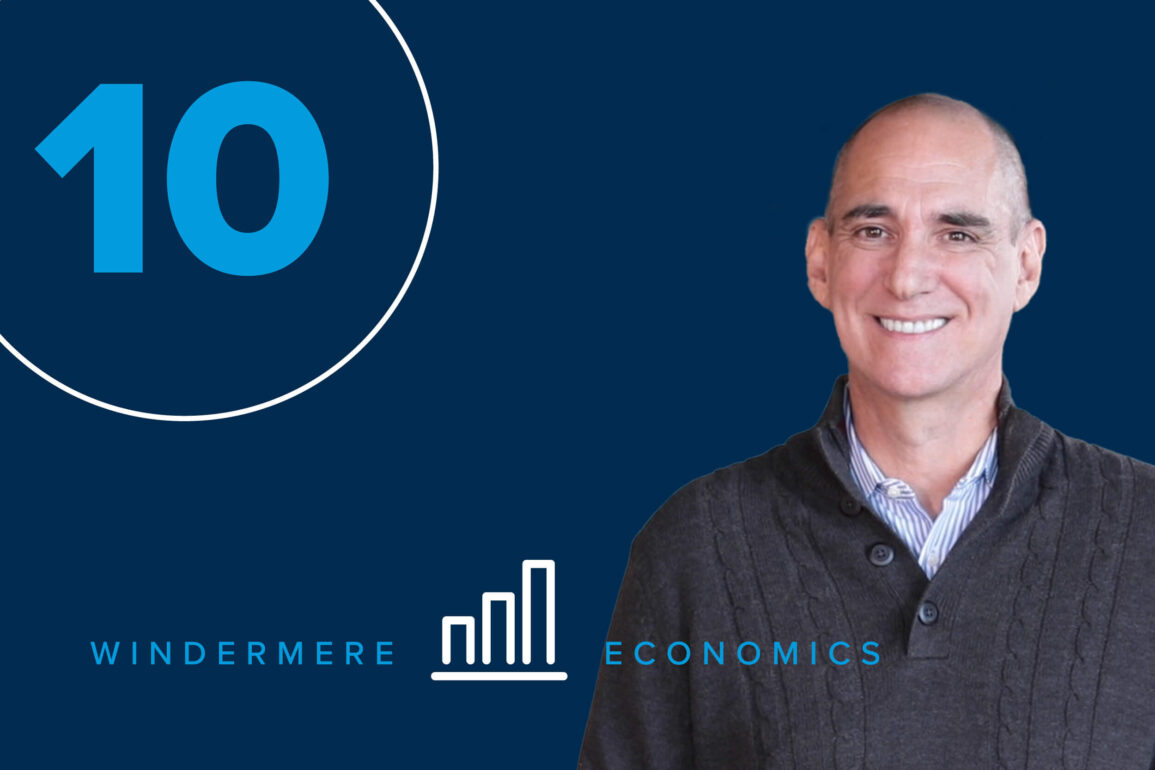Every year, Windermere’s chief economist Matthew Gardner applies his insight to the housing market, forecasting upcoming trends and patterns. To help buyers and sellers prepare to seize the right opportunity when it arises, Matthew has distilled his insights for the upcoming year into ten concise points.
Prices will continue to rise
There are some who believe that U.S. home prices will drop in the coming year given last year’s extremely rapid pace of growth, but Matthew disagrees. He doesn’t expect prices to fall; however, the pace of appreciation will slow significantly, rising by around 6% in 2022 as compared to 16% in 2021 (nationally). As such, agents need to be prepared to explain this new reality to their clients who have become very accustomed to prices spiraling upward. Those days are likely behind us—and it’s not a bad thing!
Spring will be busier than expected
The work-from-home paradigm is here to stay for the foreseeable future, and this could lead to increased buyer demand. Many companies have postponed announcing their long-term work-from-home policies due to the shifting COVID-19 variants, but Matthew believes they will soon offer more clarity to their employees. Once this happens, it will likely lead to a new pool of home buyers who want to move to more affordable markets that are further away from their workplaces. Matthew also expects to see more buyers who are driven by the need for a home that is better equipped for long-term remote working.
The rise of the suburbs
For a large number of people whose employers will allow them to work from home on an ongoing basis, remote working will not be an all-or-nothing proposition. It will be a blend of working from home and the office. I believe this will lead some buyers to look for homes in areas that are relatively proximate to their office, such as the suburbs or other ex-urban markets, but away from high-density neighborhoods.
New construction jumps
Matthew anticipates the cost of building homes to come down a bit this year as inflation finally starts to taper, and this should provide additional stimulus for homebuilders to start construction of more units. Material costs spiked in 2021 with lumber prices alone adding about $36,000 to the price of a new home. This year, he’s hopeful that the supply chain bottlenecks will be fixed, which should cause prices to moderate and result in a drop in building material costs.
Zoning issues will be addressed
Matthew is optimistic that discussions around zoning policies will continue to pick up steam this year. This is because many U.S. legislators now understand that one of the main ways to deal with housing affordability is to increase the supply of land for residential construction. Despite concerns that increased density will lower home values, he believes existing homeowners will actually see their homes rise in value faster because of these policies.
Climate change will impact where buyers live
Now that natural disasters are increasing in frequency and climate risk data is starting to become more readily available, get ready for home buyers to require information from their agents about these risks and their associated costs. Specifically, buyers will want to know about an area’s flood and fire risks and how they might impact their insurance costs and/or their mortgage rate.
Urban markets will bounce back
While increased working from home can, and will, raise housing demand in areas farther away from city centers, it may not necessarily mean less demand for living in cities. In fact, some urban neighborhoods that were once only convenient to a subset of commuters may now be considered highly desirable and accessible to a larger set of potential home buyers. At the same time, this could be a problem for some distressed urban neighborhoods where proximity to employment centers may have been their best asset.
A resurgence in foreign investors
Foreign buyers have been sitting on the sidelines since the pandemic began, but they started to look again when the travel ban was lifted in November 2021. Recently, the rise of the Omicron variant has halted their buying activity, but if our borders remain open, Matthew fully expects foreign buyer demand to rise significantly in 2022. Keep in mind, foreign buyers were still buying homes sight unseen even when they were unable to enter the country, and this will likely still be the case if borders are closed again.
First-time buyers will be an even bigger factor in 2022
Once remote working policies are clearer, we should see increased demand by first-time buyers who currently rent. In 2022, 4.8 million millennials will turn 30, which is the median age of first-time buyers in the U.S. An additional 9.4 million will turn 28 or 29 in the coming year. Matthew believes this group is likely to contemplate buying sooner than expected if they can continue working from home in some capacity. Doing so would allow them to buy in outlying markets where homes are more affordable.
Forbearance will come to an end
Forbearance was a well-thought-out program to keep people in their homes during the height of the pandemic. Some predicted this would lead to a wave of foreclosures that would hurt the housing market, but this has not been the case. In fact, there are now fewer than 900,000 U.S. homeowners in forbearance, down from its May 2020 peak of almost 4.8 million, and this number will continue to shrink. That said, there will likely be a moderate increase in foreclosure activity in 2022, but most homeowners in this situation will sell in order to meet their financial obligations rather than have their home repossessed.
This post originally appeared on the Windermere.com Blog.



